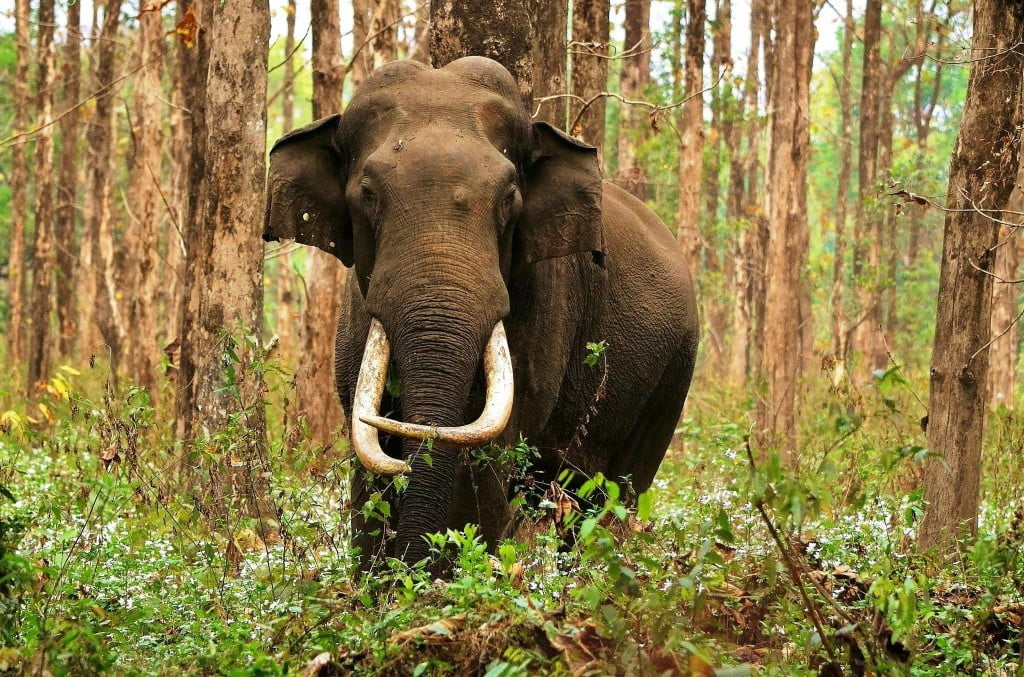Human-Elephant conflict has become a common menace with the unceasing depletion of forest cover. Rakesh Soud illuminates on this burning issue and suggests some corrective steps which can resolve this ecological disorder
Wherever elephants and people coexist, various interactions are inevitable. Elephants often symbolize wisdom, strength, and sacredness as the largest land animal. They are considered to be charismatic, wise, majestic, brave, and patient in Asian cultures. But in recent times, elephant have become a trouble animal in most of its range where human beings share their existence. This discourse of elephant –human relationship is not a new phenomenon. In most of the studies it was denoted as human-elephant conflict but we want to state it as a human-elephant crisis. It has several deep rooted causes that we have to understand with the social dimension of the particular region in a longer time frame with a multidimensional aspect of history, ecology, society and politics.
Elephant’s Crisis:
Assam harbors a potential population of remaining Asian elephants in wild. About 5620 elephants are surviving in Assam according to the 2011 census. However, they are still facing deforestation leading to shrinking habitat and poaching as the most significant issues. It leads to clashes over resources between wildlife and human beings where elephants receive the largest part of blame.
The ecological crisis of elephant population distributed in the southern bank of river Brahmaputra bordering hill tracks of Meghalaya affect a major portion of human habitation of Goalpara and Kamrup district. This writer had extensively worked in these areas of elephant habitat, which is now occupied by human habitation. These areas are dominated by Rabha, Boro, Garo, Khasi, Rajbonshi, Assamese and other minority communities.
Most of them have a long association with elephants and they know the patterns to coexist with elephants. They have a strong respect towards elephants. The best example of community motivation towards elephants can be cited from the recent death of Kalia Boro, who always held a torch along the rail tracks near Deepor Beel to save the elephants. He died on a train accident on 22 July 2014. Twelve elephants died after being hit by trains along the 4km stretch of tracks near the water body since 2001 but this man had tried his best to save them.
Human-Elephant Conflict:
The human-elephant conflict in Assam is one of the most serious problems, resulting in the loss of both elephant and human lives. The extension of agrarian frontier was directly related to the peasants’ understanding about elephants and other wild animals. The human-elephant conflicts may take many forms, from crop marauding and infrastructural damage to injury or death of people and elephants.
According to the sources, about 263 persons were killed in last three years due to human-elephant conflict in Assam. Based on the numbers recorded of elephant death, it can be said that the worst period was from 2001 to 2003, where the number of deaths were from 46 to 75. This situation of Assam’s elephants was better in the colonial times. For an instance, during 1917, 22 person killed by elephants in the province of Assam and 5 elephants were killed with a government reward of 350 rupees. A total 305 numbers of arms license were issued in the same year. But, now the whole policy towards elephants changed and we have to save these animals with minimum loss of societal wealth.
The recent deformation of habitats had broken down a long term relationship with the elephants in most of these areas of south bank. Now, people portray the animal as their biggest enemy for survival. Lack of proper management tools can be added as a critical issue which seriously affects the whole problem. Several NGOs had worked in this region with some short term measures like electric fence, chill smoke or using Koonkis (trained elephants). These tools can give some short term relief but in reality it maximizes the conflict to larger extent.
However, there are several long term plans that can be implemented starting from insurance of crops, compensation and increasing forest areas with well managed food plants. People still have a hope to get back their lovely elephants and we have to take the benefit of this attitude. Besides increasing forest cover, a strong conservation and management plan will definitely serve the purpose. In this context, Task Force on Project Elephant, which had emphasized to convert Project Elephant into a statutory body with autonomous functioning powers, is praiseworthy.
Rakesh Soud has been instrumental in setting up the Asian Elephant Conservation Campaign of Nature’s Beckon and is currently engaged as a Doctoral student of IIT Guwahati. As a progressive and pragmatic conservationist, he is focused on conservation of wildlife and their habitat in the Northeastern region, India.








